
Touring the Stevens Family Legacy
by Jack Silbert
Hoboken founder Colonel John Stevens III likely would’ve preferred if the chosen mode of transport was steamship or locomotive (his specialties) rather than a rented bus. Still, the famed inventor, lawyer, and entrepreneur might be pleased to know that 230 years later, his family name can still be the talk of the town. It certainly was last Saturday, as the Hoboken Historical Museum hosted a sold-out bus tour of the Stevens family’s architectural history. The event was held in conjunction with the museum’s current exhibit, “The Extraordinary Stevens Family: A New Jersey Legacy, 1776–1911,” open through July 5. (Another related bus tour, including a visit to the Stevens family plot at the Hoboken Cemetery, is slated for June 14. Cost is $25, or $20 for museum members.)
The museum’s collections manager, David Webster, provided compelling narration as approximately 25 bus passengers set sail that day for a three-hour tour. The first stop was the Church of the Holy Innocents at Sixth and Willow, which many residents may primarily know as a Christmas tree lot. However, a detailed presentation by Paul Somerville, former chairman of the Hoboken Historic Preservation Commission, shed light on the beautiful edifice’s storied past. It quickly became clear that the true star of the bus tour was not John Stevens, but his daughter-in-law Martha Bayard Stevens. She was the wife of Edwin, founder of the Stevens Institute of Technology, and Martha’s efforts resulted in many of the notable buildings we still know today.
Martha commissioned the construction of Holy Innocents as a tribute to her late daughter Julia. She decreed that it would always remain a “free church” (as opposed to the pew fees of other churches, which was common in that era), indicating that “all my fellow men and women shall always be permitted at all times of public worship.” Built in 1872, the church’s stunning architecture and breathtaking stained-glass images are still remarkably intact, even though the church has been generally inactive for decades. In 1977, Holy Innocents was honored as a National Historic Landmark.
The next stop was the Hoboken Public Library, the deed for which was provided to the city by—you guessed it—Martha B. Stevens in 1896. Allen Kratz, president of the library’s Board of Trustees, spoke of its history and shared printouts of old building plans. The original name was the Free Public Library and Manual Training School (you can still see the “Manual Training School” entrance on Park Avenue), and rooms were set aside for cooking, clay modeling, ironwork, carpentry, and carving. The Hoboken Library has perhaps come full circle, with last September’s opening of the Creation Space, featuring technology-based classes and projects involving 3D printers, photography, music recording, and more.
The tour moved on to Willow Terrace, the two-and-a-half “mini blocks” running from Willow to Clinton between Sixth and Seventh Streets. The museum’s director, Bob Foster, explained that it was likely Martha’s suggestion to construct this rental housing for employees of the Hoboken Land & Improvement Company, the Stevens’ development branch. Built circa 1885, the units are all just 12.5 feet wide, and were modeled after workers’ housing in Scotland. The streets of Willow Terrace feature the original cobblestone which is still beneath many of Hoboken’s streets.
The bus next headed to Sinatra Drive (known as “River Walk” back in the day) for a visit to Sybil’s Cave. Earlier this year, many people saw some wildly inaccurate information about the Cave on the sloppy website Thrillist. Thankfully, on the tour, David Webster and Bob Foster were able to set the record straight. It is a man-made cave which featured a natural spring (and its reputed health benefits, just a penny a glass!), excavated by the Stevens family in the early 1830s. The site served as a resort, drawing many visitors from Manhattan, and remained popular for about 60 years. But Sybil’s Cave literally became lost to history until then-Mayor David Roberts led the charge in the early 2000s to rediscover the cave, aided by developer Danny Gans and the Hoboken Historical Museum. Thanks to clues from an old photo, the long covered-up cave entrance was found and re-opened, and Sybil’s Cave was rededicated in 2008.
For the final stop on the tour, the bus parked outside the oldest extant building on the town’s waterfront, the Hoboken Land & Improvement Company Building at One Newark Street. Built in 1889, it served as headquarters for the Stevens family’s business operations, and in 1979 was added to the National Register of Historic Places. Next time you’re not rushing past the Land Building on your way to and from the PATH station, take a moment to admire this compact but classic structure. Most days you can walk inside and appreciate its almost nautical design. And Colonel John would probably recommend taking a peek at the original trolley tracks on the building’s south side.
The bus headed back uptown, past Edwin A. Stevens Hall, built in 1870 as the main building for the Institute of Technology, and added to the National Register of Historic Places in 1994. It also drove past the site, in Maxwell Place Park, of the original clubhouse of the New York Yacht Club, founded in 1844 by Edwin’s brother John Cox Stevens. (That original 1845 clubhouse now resides in Newport, Rhode Island.)
At last, the satisfied tour-goers returned to the Hoboken Historical Museum at 1301 Hudson Street. In addition to the June 14 bus tour, the museum will host four more Sunday lectures connected to the Stevens exhibition, including author Holly Metz’s presentation on May 17 about Peter Lee, servant to the Stevens family who was born a slave, and also a June 28 presentation by Sam Reckford, the great-great-great-grandson of Edwin and Martha Stevens. Because, to paraphrase the Brady Bunch, it all comes back to Martha, Martha, Martha….
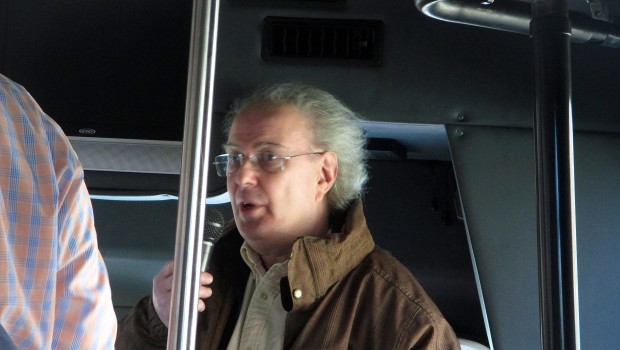
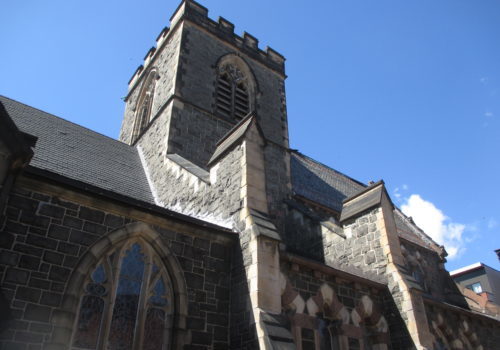
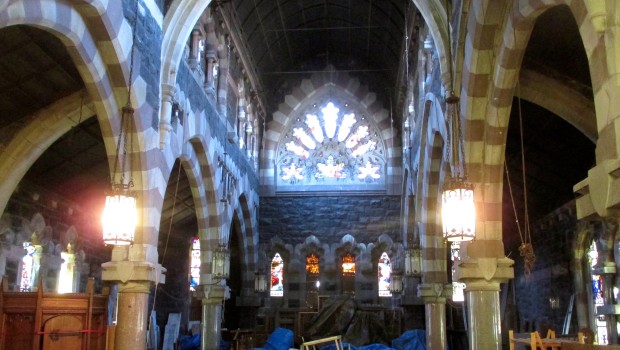
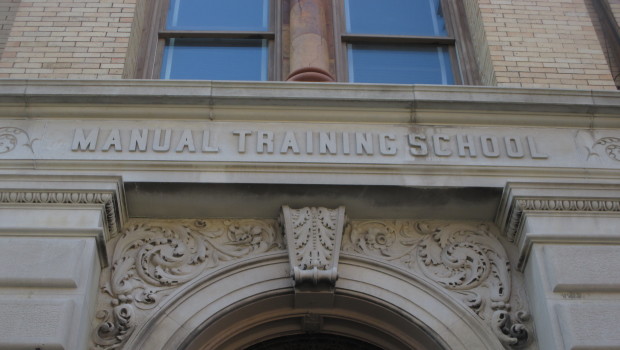
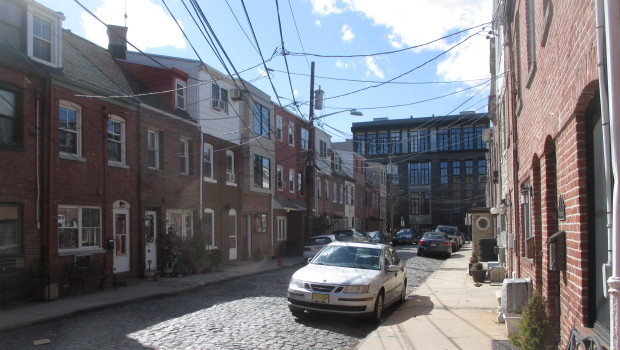
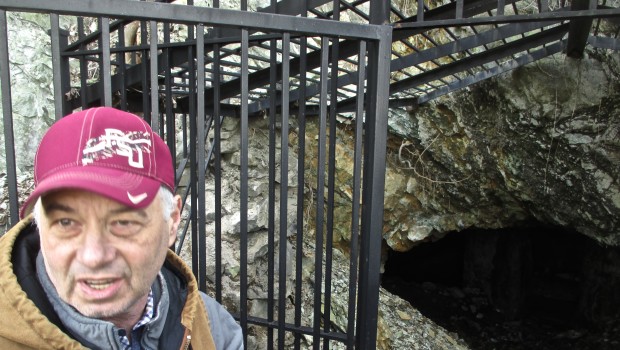
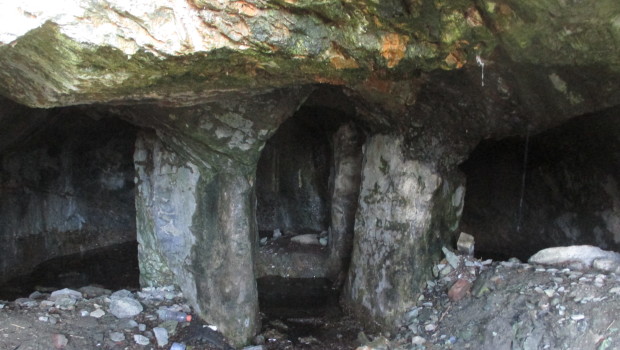
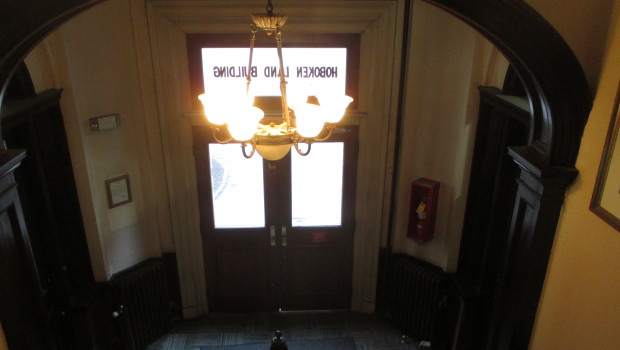
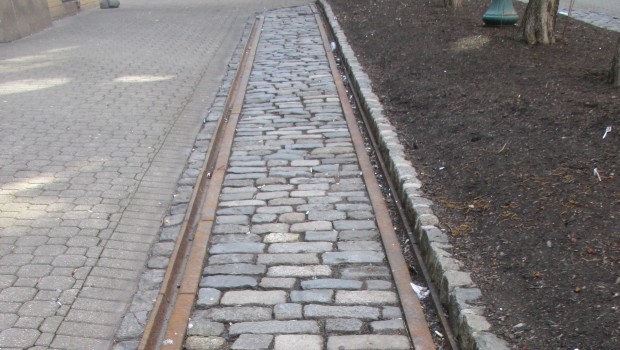

 Previous Article
Previous Article Next Article
Next Article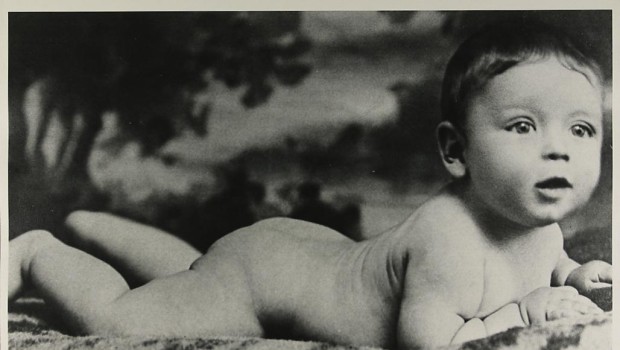 Fridays Are For Frank: “You Make Me Feel So Young” — Sinatra at 100
Fridays Are For Frank: “You Make Me Feel So Young” — Sinatra at 100  HOBOKEN RAIL YARD: Key Questions Remain Over Revised Redevelopment Plan
HOBOKEN RAIL YARD: Key Questions Remain Over Revised Redevelopment Plan 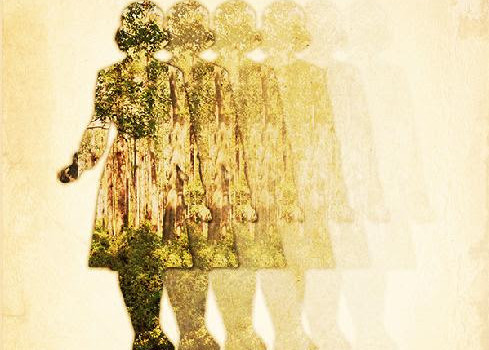 The Ballad of Janis Matthews and the Dodo Scouts—THIS WEEKEND @ Mile Square Theatre
The Ballad of Janis Matthews and the Dodo Scouts—THIS WEEKEND @ Mile Square Theatre  7th Annual Global Fund for Women Benefit @ Maxwell’s — Saturday, April 11th
7th Annual Global Fund for Women Benefit @ Maxwell’s — Saturday, April 11th  BLUE RIBBON SCHOOL: Mayor, Freeholder On Hand to Celebrate Hoboken Catholic Academy’s National Recognition
BLUE RIBBON SCHOOL: Mayor, Freeholder On Hand to Celebrate Hoboken Catholic Academy’s National Recognition  Northeasterners Panic as January Weather Hits the Northeast… in January
Northeasterners Panic as January Weather Hits the Northeast… in January 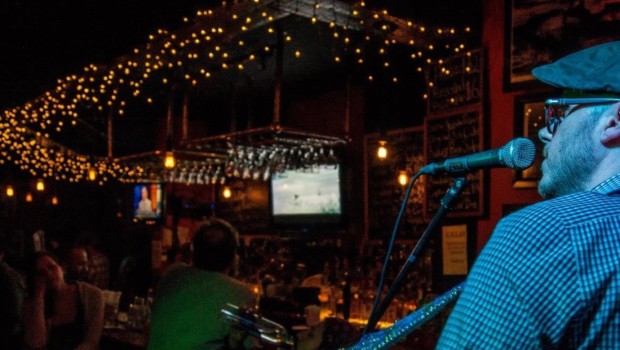 The People’s Open Mic Returns — TONIGHT @ Farside
The People’s Open Mic Returns — TONIGHT @ Farside  FEATURED PROPERTY: 212 Bloomfield Street, Hoboken – Historic, Two-Family Brick Row Home; $2,292,500
FEATURED PROPERTY: 212 Bloomfield Street, Hoboken – Historic, Two-Family Brick Row Home; $2,292,500